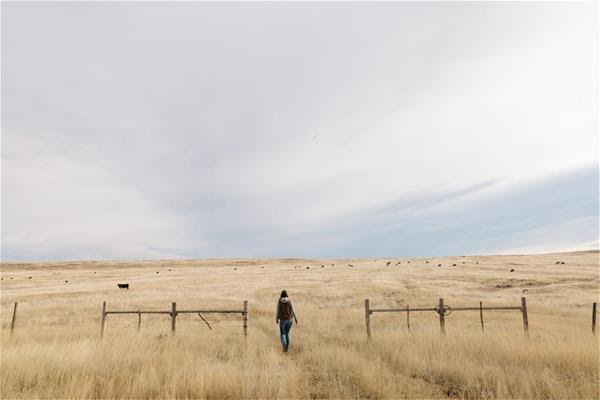Cory Carman is a fourth generation cattle rancher in eastern Oregon. Carman Ranch used to be a conventional operation: they raised calves until they were old enough to be trucked off to feedlots. When Cory took over the ranch a decade ago, she took it back to the sort of grass-fed holistic management her great-grandparents would have practiced. Today her 300 or so cattle live their whole lives on Carman Ranch, coming and going as they please in the pasture, eating grass, chewing cud.
A few years ago, Cory had an exceptional steer: well built, strong, healthy. She expected that he would produce phenomenal beef, and she planned to reserve the meat to offer to a couple of her favorite customers. A few weeks before he was to go to market, she noticed he was limping a bit—perhaps he stepped in a badger hole and twisted his ankle, which isn’t uncommon for cattle out on pasture. Cory was a bit concerned, but he soon walked off the limp, and he was so big and strong that she assumed the little injury wouldn’t have much of an impact. But when she tasted the beef, it had an off, livery flavor. The flavor was so poor that she decided not to sell it at all; she kept all of the meat for her own family to eat because she didn’t want to disappoint anyone else. “It was an expensive lesson to learn,” she told me.
Think about that for a moment. This steer, even though it lived its entire life outdoors on pasture, eating grass, chewing cud, generally having a pretty natural, happy cow life, had one small injury a few weeks before slaughter and the beef tasted significantly worse. Compare that to an industrially raised cow: spending months on end at the feedlot, fighting with other animals because there isn’t enough room for the hundreds or thousands of them to coexist peacefully, eating a diet full of antibiotics and hormones without a blade of fresh grass in sight. Think about the impact on flavor from a lifetime spent in stressful conditions.
This isn’t just an anecdote.
Herb Eckhouse is the founder of Iowa’s cured pork palace La Quercia. He once attended an event that included a tasting of two samples of heritage-breed Berkshire pork: one was raised in confinement, and the other was raised on pasture. With the confinement pork, you could distinctly smell pig manure. “If you didn’t know the smell, you might just think it was sort of porky,” Herb explained, “but once you know that smell there’s no mistaking it.” When pigs are raised in confinement, they typically spend their lives standing in small pens on slatted floors above an enormous lagoon filled with manure. The air smells as toxic as you’d imagine, and that’s what the pigs breathe all day every day. It’s no wonder the odor permeates their flesh.
Butchers will tell you that the way an animal is treated impacts the flavor of its meat, too. If a pig is stressed right before slaughter its heart rate will rise and it will release adrenaline. That changes the color of the pork: it’s paler, but dotted with red spots, like chicken pox. The texture ends up being soft and spongy when you cook it, and it’s basically tasteless. The same thing happens to beef except that the meat ends up getting darker, not paler, and the beef takes on a soapy flavor. This meat is never sold raw, so consumers don’t see it—but butchers do. The whole carcass is affected, so good butchers usually end up discarding the whole thing. Less scrupulous butchers may cook it into a dish with a bunch of other ingredients to try to cover up the poor quality of the meat.
There are a lot of things that contribute to determining if an animal was treated humanely. But the biggest impact comes from giving an animal enough space.
Confined animals get sick more easily because diseases spread more quickly when animals are kept close together, so the solution is to pump them full of antibiotics. Confined animals are difficult to clean up after, so the solution is to put them on a slatted floor so their waste falls into a pool below. Confined mother pigs may end up lying down on a piglet and squashing it to death, so the solution is to cram the sows into tiny pens where they can’t move at all and are stuck for weeks on end being a 24/7 milk pump. Confined animals fight with each other, so the solution is to physically alter them by doing something like clipping their teeth or beaks and docking their tails—they’re still going to fight, but now they’ll do less damage to each other.
Alternatively, all of these issues could be solved by just giving the animals enough space to root and roam as they please—and so much the better if the space is outdoors, with fresh air and sunshine and grassy pastures, like at Carman Ranch or at the farms where La Quercia gets their pork. It takes more land, more labor, and more time, and that means it costs more. But it also makes for better tasting meat.

